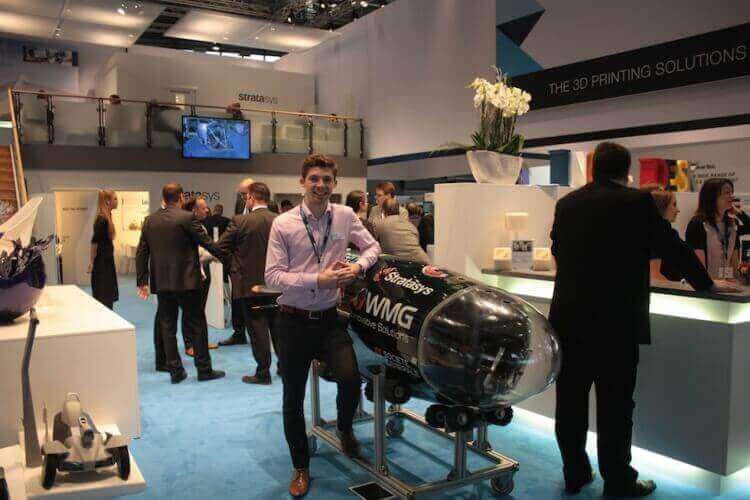Engineering students from Warwick University have built the “most 3D printed vessel” for this year’s European International Submarine race.
The annual European International Submarine Races is an academic project which challenges final year Masters engineering students to build and race a human-powered submarine.
The race, which is now running for its fourth year, was the reason that six students known as ‘WarwickSub’ have created an impressive vessel that they call the Godiva 2.
The students are from various backgrounds including mechanical and manufacturing engineering, and have used numerous 3D printed parts to construct their submarine.
These parts have been designed to withstand the environment faced in the race, and include the fins, the feet in which they sit, the propeller shroud and blades, and a number of fixings, housings and internal steering components.
The students designed and manufactured the submarine under the supervision of WMG’s Dr Ian Tuersley in their pit area within WMG’s Engineering Hall.

How was the Submarine made?
Josh Dobson, project leader of the Warwick Submarine team, said:
“Using this technology, we were able to 3D print final parts for the submarine 90 per cent faster than using conventional manufacturing and also saved £2,000-£3,000 in manufacturing costs. These are parts that can perform in the harshest waters, which is incredible given the speed and cost at which they can be produced.”
The team used a Stratasys 3D printer when building a prototype for last year’s competition, and say the use of the Fortus 3D Printer from Stratasys was an integral part of building the submarine in time.
For this year, rather than just creating a 3D printed prototype, they have used the technology to manufacture final production parts capable of performing in racing conditions.
The propeller blades were 3D printed by Stratsys in the USA, but otherwise, all of the parts were produced from ABS-M30.
On the benefits of 3D printing, Dobson added:
“Our fixing feet are an incredibly complex piece of geometry and have been 3D printed to perfectly fit the hull at virtually no additional cost, yet remain as functional and strong as a traditionally manufactured part. In addition, by creating the part using 3D printing, we’ve reduced material wastage by about 75 per cent compared to machining the part traditionally from a solid piece of metal, which bodes well for a future of more sustainable manufacturing.”
If you’re interested to see the submarine in action, then check out the race in Gosport, Hants between 6-15 July.
(Source: Business Wire)

License: The text of "“Most 3D Printed Vessel” Enters Submarine Race Series" by All3DP is licensed under a Creative Commons Attribution 4.0 International License.